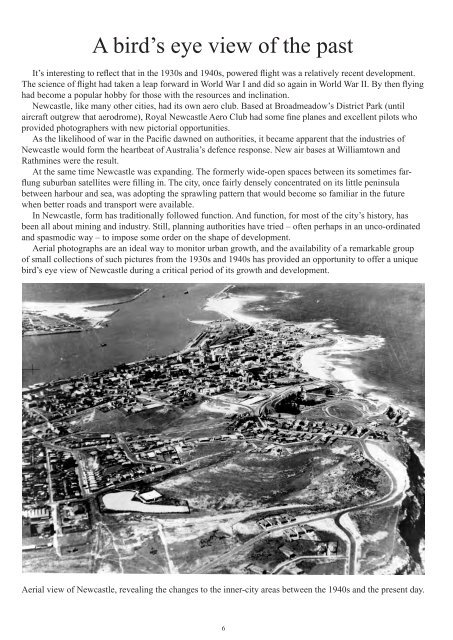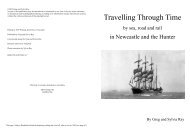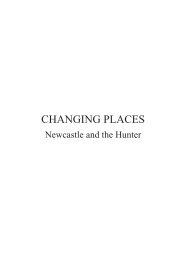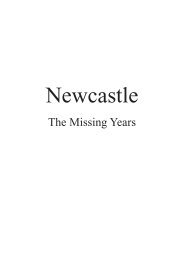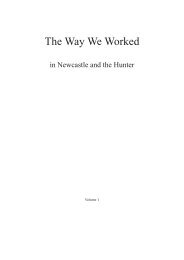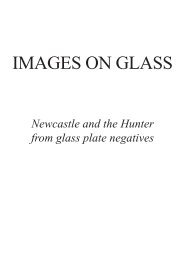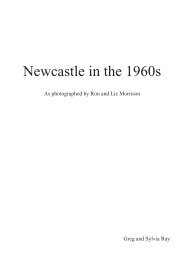Create successful ePaper yourself
Turn your PDF publications into a flip-book with our unique Google optimized e-Paper software.
A bird’s eye view of the past<br />
It’s interesting to reflect that in the 1930s and 1940s, powered flight was a relatively recent development.<br />
The science of flight had taken a leap forward in World War I and did so again in World War II. By then flying<br />
had become a popular hobby for those with the resources and inclination.<br />
<strong>Newcastle</strong>, like many other cities, had its own aero club. Based at Broadmeadow’s District Park (until<br />
aircraft outgrew that aerodrome), Royal <strong>Newcastle</strong> Aero Club had some fine planes and excellent pilots who<br />
provided photographers with new pictorial opportunities.<br />
As the likelihood of war in the Pacific dawned on authorities, it became apparent that the industries of<br />
<strong>Newcastle</strong> would form the heartbeat of Australia’s defence response. New air bases at Williamtown and<br />
Rathmines were the result.<br />
At the same time <strong>Newcastle</strong> was expanding. The formerly wide-open spaces between its sometimes farflung<br />
suburban satellites were filling in. The city, once fairly densely concentrated on its little peninsula<br />
between harbour and sea, was adopting the sprawling pattern that would become so familiar in the future<br />
when better roads and transport were available.<br />
In <strong>Newcastle</strong>, form has traditionally followed function. And function, for most of the city’s history, has<br />
been all about mining and industry. Still, planning authorities have tried – often perhaps in an unco-ordinated<br />
and spasmodic way – to impose some order on the shape of development.<br />
Aerial photographs are an ideal way to monitor urban growth, and the availability of a remarkable group<br />
of small collections of such pictures <strong>from</strong> the 1930s and 1940s has provided an opportunity to offer a unique<br />
bird’s eye view of <strong>Newcastle</strong> during a critical period of its growth and development.<br />
Aerial view of <strong>Newcastle</strong>, revealing the changes to the inner-city areas between the 1940s and the present day.<br />
6


